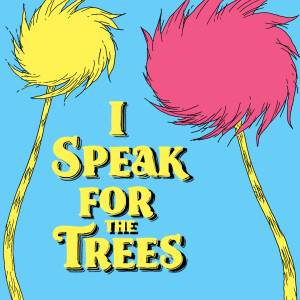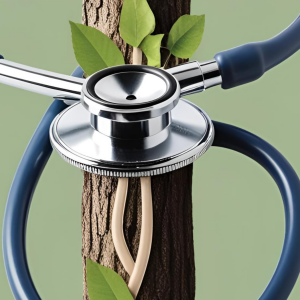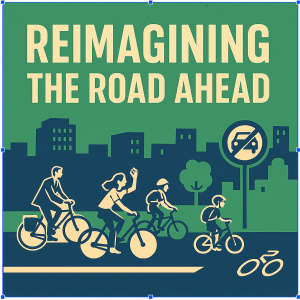Soundings
Soundings is the sandbox for all student work from the Stanford Storytelling Project (SSP). SSP is an arts program at Stanford University that explores how we live in and through stories and how we can use them to change our lives. Our mission is to promote the transformative nature of traditional and modern oral storytelling, from Lakota tales to Radiolab, and empower students to create and perform their own stories. The project sponsors courses, workshops, live events, and grants, along with its radio show State of the Human.
Episodes

Wednesday Jun 25, 2025
Wednesday Jun 25, 2025
Through the two possible journeys of an Aloha Shirt, Tead Count tells the story of the true cost of fast fashion.
Music from Blue Dot Sessions.
Interviewees:
Barchi Gillai, Associate Director Value Chain Innovation Initiative,https://www.gsb.stanford.edu/faculty-research/labs-initiatives/vcii
Lila Temple, Stanford FashionX, https://www.stanfordfashionx.com/
Research:a. https://www.sgs.com/en-be/news/2023/10/cc-q3-2023-profitability-and-textile-durability-in-the-circular-economyb. https://www.roadrunnerwm.com/blog/textile-waste-environmental-crisisc. theguardian.comd. https://www.ellenmacarthurfoundation.org/fashion-and-the-circular-economy-deep-divee. https://cottonique.com/blogs/articles/how-long-will-it-take-for-fabrics-to-decompose?srsltid=AfmBOoqh10_PyQpTbPI-XzlMYGUo2dN1DVejdaOfczf7fPLVzUfVWJVhf. https://www.unep.org/technical-highlight/sustainable-fashion-take-centre-stage-zero-waste-day

Wednesday Jun 25, 2025
Wednesday Jun 25, 2025
I Speak for the Trees is a podcast that explores the consequences of land use change. Join us as we investigate the parallels between The Lorax and the real world in order to address the issue of sustainable land use change. From local land clearing in Wisconsin, restoration of overgrazed ranchland in Texas, to green space implementation in Chicago, we highlight how technology, policy, education, and community action can come together to reshape the way we think about and interact with our land.
Music and Sound:
Music and sound effects from Descript Library other than McCarthy (Blue Dot Sessions)Quantum Jazz - Passing Fields (Blue Dot Sessions) First Results (Blue Dot Sessions),Basketliner (Blue Dot Sessions) Borough (Blue Dot Sessions) Lakal (Blue Dot Sessions) andDelamine (Blue Dot Sessions). David Bamberger speaking clips from National Geographic’s “50Years Ago, This Was a Wasteland. He Changed Everything | Short Film Showcase” YouTubeDocumentary.
The Lorax by Dr. Suess, audiobook read by Ted Danson
Interviewee Bios:Dr. Diana Moanga is a Lecturer and the Manager of the Spatial Analysis Center in the StanfordDoerr School of Sustainability. Her research includes studying land use land cover changeprocesses using remote sensing and spatial analysis, focusing on the effects of environmental andanthropogenic stressors on coastal socio-environmental systems. She is particularly passionateabout furthering our understanding of climate equity for coastal communities and mappingcoastal hazards at various scales. She has a Ph.D. in Environmental Science Policy andManagement from UC Berkeley in 2020. Her dissertation research used geospatial techniques tostudy land use and land cover changes across California. Specifically, her research exploredmanagement impacts on California’s coastal lands, agricultural transitions in the Central Valley,and wildfire activity under future climate regimes. Diana also earned a Master’s in Science inMarine Affairs and Policy from the University of Miami in 2015. For her master's research sheexamined the spatial and temporal characteristics of harmful algal blooms and studied coastalzone management and coral conservation.Scott Stortz is the elected Village President of Slinger, Wisconsin, where he leads efforts to fosterthoughtful growth and community development with an emphasis on quality of life, controlledtaxes, and business development. He’s held the position of Village President since 2021, and isalso the president of Star Properties, Inc, a real estate firm specializing in residential sales inWashington, Ozaukee, Sheboygan, Fond Du Lac, Dodge, Waukesha and Milwaukee counties.He graduated Magna Cum Laude from Cardinal Stritch University with a Bachelor of Scienceand a minor in Sales & Marketing.
David Bamberger is the Founder and Chairman Emeritus of Selah Ranch in Blanco County,Texas, in the heart of the Hill Country. Born into poverty, he created a successful career inentrepreneurship, which allowed him to fund the purchase of Selah Ranch in 1969. Over thecourse of the next quarter century, Bamberger and his team restored what was the “‘sorriest pieceof land’” in Blanco County. Through a myriad of methods–including the selective thinning ofAshe Juniper trees–and countless difficulties, their efforts have resulted in a thriving ecosystemand the rejuvenation of formerly-dry springs. In addition to being a steward of the land, Mr.Bamberger has made tremendous efforts to share his wisdom with the next generation, hostingfield trips to Selah Ranch, and developing curriculum on topics such as groundwater infiltration.Research:● Importance and prevalence of cities in the futureNeil Khor, et al. (2022). World Cities Report 2022, Envisioning the Future of Cities, UNHabitat https://unhabitat.org/sites/default/files/2022/06/wcr_2022.pdf● Maggie Daley Park construction processTarantino, J. (2024). Explore Maggie Daley Park: Chicago’s Urban Wonderland. TheEnvironmental Blog. https://www.theenvironmentalblog.org/2024/12/maggie-daley-park/● Ecosystem Services DefinitionMillennium ecosystem assessment, M. E. A. Ecosystems and human well-being. Vol. 5.Washington, DC: Island press, 2005.● National Geographic Documentary on Selah RanchNational Geographic. “50 Years Ago, This Was a Wasteland. He Changed Everything |Short Film Showcase.” YouTube, 24 Apr. 2017,www.youtube.com/watch?v=ZSPkcpGmflE. Accessed 21 May 2025.● Background on Selah RanchKlepper, Dan E. “Scout | December 2007 | TPW Magazine.” Tpwmagazine.com, 2025,ntpwmagazine.com/archive/2007/dec/reader/. Accessed 28 Apr. 2025.

Wednesday Jun 25, 2025
Wednesday Jun 25, 2025
Join Natalia, Iamanni, and Marjorie on a journey of investigating the connection of health inequity and sustainability in diabetes treatments!

Wednesday Jun 25, 2025
Wednesday Jun 25, 2025
"Reimagining the Road Ahead" delves into the concept of car-free days, especially their implementation in Bogotá and Paris, the political and practical challenges to their widespread adoption, and the broader push to re-imagine urban spaces with fewer cars.
Interviews:Enrique Peñalosa is a Colombian politician and urban strategist who served as mayor ofBogotá (1998–2000, 2016–2019). He is known for championing sustainable urban mobility,including Bogotá’s TransMilenio bus system and the city’s first Día Sin Carro (Car-Free Day), abold initiative that reshaped public attitudes toward transportation and urban space. His policiesprioritized pedestrian and cycling infrastructure, aiming to create a more equitable andaccessible city.https://en.wikipedia.org/wiki/Enrique_Pe%C3%B1alosaDaniel Rich is a former local government manager with over 30 years of public sectorexperience. He served as Mountain View’s City Manager from 2011 to 2019, overseeingcomplex land use projects and regional planning efforts. Earlier in his career, he held leadershiproles in Sunnyvale, Belmont, and Campbell, as well as working for members of Congress. Sinceretiring, he has been a lecturer at Stanford University, teaching courses on public policy andlocal governmenthttps://urbanstudies.stanford.edu/people/daniel-h-richDehan (Danno) Glanz is an urban designer and planner with expertise in transit-orienteddevelopment. His work spans large-scale village design, architectural prototypes, andmixed-use neighborhoods that integrate sustainable transportation. He has contributed toprojects such as the Hunters Point Naval Shipyard Re-Use Plan and the Richmond BARTTransit Village. Glanz holds a BA in Urban Studies from Stanford University and a Master ofArchitecture from UCLA. (Though not in our podcast, his interview helped our group refine ourscope early in production).https://urbanstudies.stanford.edu/people/dehan-danno-glanz
MusicArtist | Song Title | Source (in order of appearance)Carlos Vives | Ella Es Mi Fiesta | YouTubeGreenfire | False Records | Blue Dot SessionsJon Presstone | The Nature of Curiosity | YouTubeDesjardins | The Maison | Blue Dot SessionsAzalai | Taoudella | Blue Dot SessionsBodytonic | Thannoid | Blue Dot SessionsMaurice Larcange | Traditionnel musette | YouTubeStromae | Alors on danse | YouTubeGlass Obelisk | First Results | Blue Dot SessionsEltham House | Delicates | Blue Dot SessionsThe Fence | Bivly | Blue Dot Sessions
ReferencesAtlas of Urban Expansion - Los Angeles. (n.d.).http://www.atlasofurbanexpansion.org/cities/view/Los_Angeles This online resource provides detailed spatial and statistical data on the urban expansion of Los Angeles, emphasizing the city's extensive growth and sprawling roadnetworks. It highlights how urban development patterns have shaped car-centric land use and transportation infrastructure.Chrisafis, A. (2015, September 27). All-blue skies in Paris as city centre goes car-free for firsttime. The Guardian; The Guardian.https://www.theguardian.com/cities/2015/sep/27/all-blue-skies-in-paris-as-city-centre-goes-car-free-for-first-time
This news article reports on Paris’s first car-free day, describing the environmental and social impact of the initiative, including improved air quality and public reception. It serves as a case study demonstrating the short-term benefits of restricting car access in urban centers.Glazener, A., Wylie, J., Van Waas, W., & Khreis, H. (2022). The impacts of Car-Free Days andevents on the environment and human health. Current Environmental Health Reports,9(2), 165–182.
https://doi.org/10.1007/s40572-022-00342-yThis peer-reviewed study reviews global evidence on how car-free events affect air pollution levels and public health, with findings that support reduced vehicular traffic as a means to improve urban environmental conditions. The authors also explore limitations and recommendations for future policy design.
Identifying the amount of urban space occupied by roads. (2021, June 21). EU Urban Mobility Observatory.https://urban-mobility-observatory.transport.ec.europa.eu/news-events/news/identifying-amount-urban-space-occupied-roads-2021-06-21_enThis article examines how much of a city's surface area is allocated to road infrastructure, highlighting the implications for urban planning and sustainability. It underscores the need to reevaluate space usage in cities dominated by car-centric designs.Masiol, M., Agostinelli, C., Formenton, G., Tarabotti, E., & Pavoni, B. (2014). Thirteen years of air pollution hourly monitoring in a large city: Potential sources, trends, cycles and effects of car-free days. The Science of the Total Environment, 494–495, 84–96.https://doi.org/10.1016/j.scitotenv.2014.06.122Based on over a decade of air quality monitoring, this study analyzes pollution patterns and confirms measurable air quality improvements during car-free days. It offers valuable data for policymakers aiming to implement sustainable transportation strategies.
Mercier, J. (2009). Equity, social justice, and sustainable urban transportation in the Twenty-First Century. Administrative Theory & Praxis, 31(2), 145–163.https://doi.org/10.2753/atp1084-1806310201Mercier explores the intersection of transportation planning with equity and social justice, arguing for inclusive policies that consider marginalized communities. The article critiques conventional transportation systems and proposes frameworks for more equitable urban mobility.Paris Journée sans Voitures. (2015, October). Soundlandscapes’ Blog.https://soundlandscapes.wordpress.com/2015/10/01/paris-journee-sans-voitures/This blog post offers a personal narrative and sound-based exploration of Paris's car-free day, capturing the unique urban atmosphere when motor traffic is halted. It complements academic studies with experiential insight into public reactions and sensory transformations.Potter, B. (2023, August 10). How the Car Came to LA. Construction Physics.https://www.construction-physics.com/p/how-the-car-came-to-laPotter provides a historical analysis of how Los Angeles developed its car-dominated infrastructure, explaining economic, political, and cultural factors. The article contextualizes current urban form and mobility issues in the city’s past transportation choices.Statista. (2025, April 28). Transportation sector CO₂ emissions in the U.S. 1975-2024.https://www.statista.com/statistics/1118464/transportation-co2-emissions-in-the-us-energy-consumption/#:~:text=U.S.%20transportation%20sector%20emissions%20from,percent%20of%20the%20global%20total.This statistical source charts U.S. transportation-related CO₂ emissions over five decades, illustrating trends and contributing factors. It serves as a key reference for understanding the environmental footprint of vehicular travel.The Paris Agreement and uncertainty in the warming from 1850-1900 to recent decades. (n.d.).Copernicus. https://climate.copernicus.eu/GCH2023-Paris-AgreementThis article discusses the scientific assessments underpinning the Paris Agreement targets, focusing on climate change baselines and projected temperature increases. It emphasizes the urgency of reducing emissions, including from transportation, to meet global climate goals.UNFCCC. (2025). The Paris Agreement. United Nations Climate Change; United Nations.https://unfccc.int/process-and-meetings/the-paris-agreementThis official UN source outlines the framework and commitments of the Paris Agreement,aiming to limit global warming through national contributions and mitigation strategies. It provides the international policy context for local climate actions, including transportation
reform.Urry, J., Leach, J. M., Dunn, N., Coulton, C., & Team, L. C. (2017). The little book of car free cities.This publication presents a concise guide to envisioning and implementing car-freeurban environments, supported by case studies and design principles. It advocates forreimagined cityscapes that prioritize people, sustainability, and public health over privatevehicle use.

